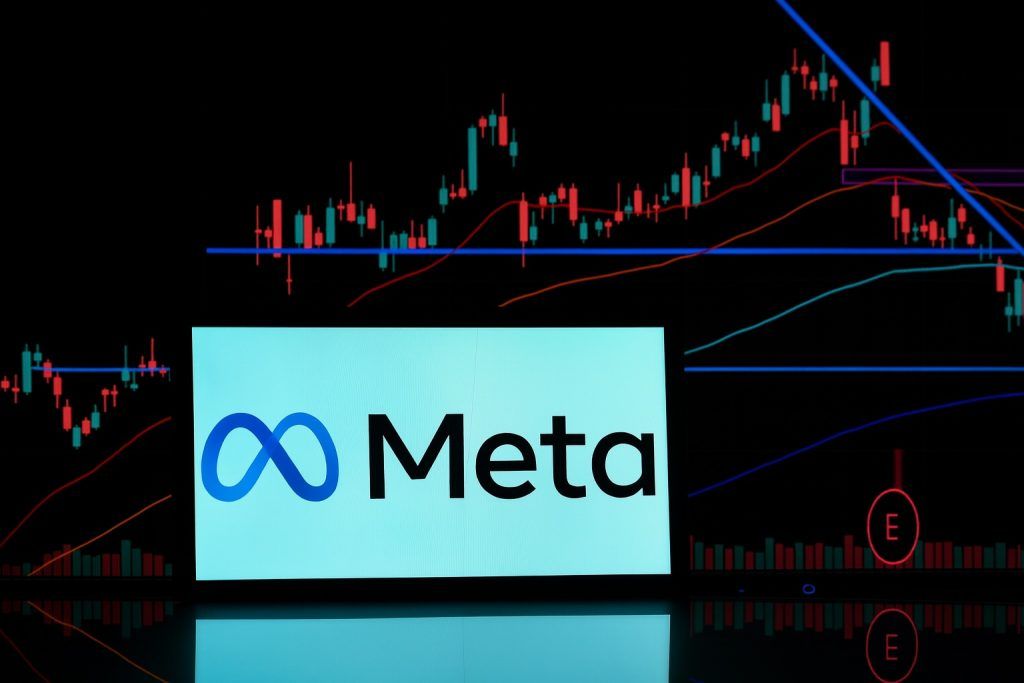- Stock Price & Performance: Amazon’s stock closed around $213 on Friday, Oct. 17 [1]. Shares have rebounded from a late-September dip but remain ~12% below their 2025 peak (~$242 in February) and are roughly flat year-to-date – underperforming the broader market’s double-digit gain [2] [3].
- Major Stake Sale: Billionaire philanthropist MacKenzie Scott (Jeff Bezos’ ex-wife) slashed her Amazon stake by ~42% over the past year, divesting roughly 58 million shares (worth about $12.6 billion) according to an Oct. 14 filing [4]. Amazon’s stock only dipped ~2% on the news, a move traders saw as a short-lived reaction since the sale doesn’t reflect any change in Amazon’s fundamentals [5]. Scott’s stake reduction is widely viewed as funding her charitable giving rather than a statement on the company.
- Regulatory Overhang Eased:Amazon reached a $2.5 billion settlement with the U.S. Federal Trade Commission to resolve allegations it used deceptive “dark patterns” to enroll users in Prime [6]. The Sept. 30 agreement includes $1.5 billion in customer refunds and $1 billion in fines. Importantly, this removed a legal cloud over Amazon – investors “viewed the move positively because it removed uncertainty,” noted analyst Daniel Kline [7]. The payout is relatively painless for Amazon (about the revenue it generates in 33 hours) and shares were largely unchanged after the news [8].
- Analyst Sentiment & Earnings: Wall Street remains bullish on AMZN. 45 out of 46 analysts covering Amazon rate it a “Buy,” with an average 12-month price target around $264 [9] (~20% above current levels). Goldman Sachs, for example, recently hiked its target to $275 and called Amazon a top pick, citing underappreciated strength in its cloud business [10]. Amazon’s Q3 earnings report is due October 30, and consensus forecasts ~11–13% year-over-year sales growth [11]. Analysts also predict a robust holiday quarter (Q4) with mid-teens revenue gains fueled by e-commerce, AWS and advertising [12].
- Holiday Prep and Headwinds: Amazon is gearing up for peak season – it plans to hire 250,000 U.S. workers for the holidays (matching the last two years) [13] and recently committed over $1 billion to boost pay and benefits for its fulfillment and transportation employees [14]. At the same time, the company faces intensifying competition and regulatory scrutiny. Rivals Microsoft and Google are growing their cloud segments much faster than AWS [15], and brick-and-mortar competitors like Walmart are expanding online sales. The FTC also has a pending 2023 antitrust lawsuit accusing Amazon of monopolistic practices [16], posing a longer-term risk. Amazon’s heavy investments in AI, content, and logistics could pressure margins in the near term [17], but so far the company’s financial performance has been strong, and insiders note that “fundamentally, the stock remains sound” [18].
Stock Performance Snapshot
Amazon’s stock enters the week trading in the low-$210s per share, consolidating after a choppy few weeks. As of Friday’s close, AMZN was about $213 [19], down slightly over the past week and roughly 3% higher than a month ago. The stock has stabilized since a late-September selloff and a brief mid-October pullback. Notably, Amazon hit an all-time high near $242 in early February 2025 amid a tech rally, but gave back about 10% during the summer on profit-taking and market volatility [20]. Year-to-date, Amazon is essentially flat (up only ~3%), lagging both the S&P 500 and Nasdaq (which is up ~20% in 2025) [21]. In other words, Amazon has underperformed its mega-cap tech peers this year, as investors adopt a “wait-and-see” approach despite the company’s solid fundamentals [22].
From a technical standpoint, Amazon is trading in the middle of its 52-week range (roughly $162 – $242) [23]. It remains above its long-term support levels – for instance, shares are comfortably above the 200-day moving average (~$211) [24] – suggesting the recent downtrend may have bottomed out. The stock’s beta is around 1.3, indicating slightly higher volatility than the market [25]. All told, after a year of back-and-forth swings, Amazon’s stock is hovering at a crossroads: investors are balancing the company’s robust earnings growth against external headwinds and competition.
Recent Developments and Catalysts
Insider Sales: The most eye-catching development in recent days was MacKenzie Scott’s massive stake reduction. According to a regulatory filing (dated Sept. 30), Scott – the former wife of founder Jeff Bezos – cut her Amazon holdings by 42% over the past year [26]. She now owns ~81.1 million shares, down from ~139 million, a sale worth roughly $12.6 billion at current prices [27]. This marked one of the largest insider share disposals in Amazon’s history. However, the market reaction was muted: Amazon’s stock dipped only about 2% on Oct. 15 when the news broke [28]. Traders noted this was likely just a short-term reaction, since Scott’s move appears driven by her philanthropy (she has donated over $19 billion since 2019) and does not signal any negative change in Amazon’s business fundamentals [29]. Jeff Bezos himself has also been trimming his stake gradually – after recent sales, Bezos’s ownership fell below 10% of Amazon’s shares (around 964 million shares, ~9% of the company) [30], though these sales too have been absorbed by the market without much fuss.
FTC Prime Settlement: Earlier in October, Amazon made headlines by quietly settling a high-profile FTC lawsuit over its Prime subscription practices. The company agreed to pay $2.5 billion to resolve allegations that it deceived millions of customers into signing up for Prime and made it hard to cancel [31]. The settlement – announced Sept. 30 amid a trial – includes $1.5 billion to refund consumers and a $1 billion civil penalty [32]. Importantly, Amazon did not admit wrongdoing, but it agreed to implement clearer disclosures and a one-click “cancel” button for Prime [33]. Financially, the impact is negligible for Amazon (the fine equals roughly 33 hours of Amazon’s sales volume) [34]. Investors actually welcomed the settlement, since it eliminates a source of uncertainty going forward. “It clears a cloud of uncertainty… by writing a one-time check, CEO Andy Jassy removed a potential long distraction,” one analyst observed, noting that Amazon’s stock rose on the news, reflecting relief that the Prime issue won’t drag on [35]. In short, this move “cleared the decks” ahead of the crucial holiday season, allowing Amazon to focus on growth rather than courtroom battles.
Product & Workforce Initiatives: In the same timeframe, Amazon rolled out several initiatives underscoring its growth strategy. The company hosted a product event unveiling new AI-powered Alexa features (“Alexa+” generative AI assistant capabilities) and an upgraded lineup of smart devices [36]. This is part of Amazon’s push to finally monetize its voice assistant and showcase its advances in AI – a field where rivals like Google and Apple have also been active. Amazon simultaneously announced it will spend $1 billion on pay raises and benefits for its U.S. warehouse and transportation workers [37]. This investment aims to improve worker retention and comes as Amazon faces ongoing labor pressures (including unionization efforts in some facilities).
On the international front, Amazon outlined plans to invest €1 billion in Belgium by 2027 to expand its Amazon Web Services (AWS) data centers and logistics footprint in Europe [38]. And looking toward the holidays, Amazon said it will hire 250,000 seasonal workers across the U.S. for the third year in a row [39]. The seasonal hiring – at an average $19–23/hour wage – reflects confidence that Amazon will see another surge in orders in Q4. It also signals that despite concerns of softer consumer spending, Amazon is preparing for record holiday e-commerce demand. (Adobe Analytics projects U.S. online sales will still grow this holiday, albeit at a slightly slower pace [40].) These developments collectively show Amazon shoring up its technology and fulfillment capabilities heading into its busiest quarter.
Financial Strength and Q3 Outlook
Amazon’s recent financial results have reinforced the bull case. In Q2 2025, the company delivered strong double-digit growth after a pandemic-era slowdown. Revenue jumped 13% year-over-year to $167.7 billion [41], marking a second straight quarter of accelerating sales. Growth was broad-based: online store revenue climbed ~11%, third-party seller services and advertising jumped over 20%, and critically AWS (cloud) growth re-accelerated to about 17% YoY after dipping below 16% in prior quarters. Amazon’s profitability also surged – net income hit $18.2 billion (or $1.68 per share) in Q2, handily beating Wall Street’s expectations [42]. Operating income more than doubled from a year ago, lifting operating margins to ~13% (versus ~5% two years ago) [43]. This margin expansion is a direct payoff from CEO Andy Jassy’s cost-cutting initiatives (including 27,000 layoffs and efficiency moves in 2023) that have “right-sized” Amazon’s expense base [44]. In short, Amazon’s core businesses are firing on multiple cylinders – AWS remains a cash cow, the advertising unit is now a ~$40B/year high-margin segment, and e-commerce sales are growing again – giving the company significant operating leverage.
All this underpins Wall Street’s optimism for the upcoming earnings. Analysts overwhelmingly rate AMZN a Buy, and the consensus 1-year price target around $265 implies substantial upside from current levels [45]. As noted, 45 of 46 analysts have a bullish rating [46]. Many firms have raised their targets in recent months; for example, Goldman Sachs boosted its target from $240 to $275 and named Amazon a “top pick” after Q2, arguing that the market is underestimating Amazon’s cloud and advertising strength [47]. The average target in the mid-$260s suggests expectations of ~20% stock appreciation. In the words of one fund manager, “fundamentally, the stock remains sound”, with institutional investors even using dips as buying opportunities [48]. Notably, sovereign wealth funds like Norway’s Oil Fund reportedly increased their Amazon stake recently, indicating confidence in Amazon’s long-term trajectory [49].
For Q3 2025 (July–Sept), to be reported at month’s end, Amazon is forecast to extend its growth streak. Wall Street expects net sales to rise on the order of 11–13% year-over-year [50], which would be another quarter of double-digit expansion. The growth drivers are familiar: steady gains in e-commerce (helped by faster delivery options and another successful Prime Day event), continued strength in AWS cloud services, and booming advertising revenues as more sellers and brands pay to promote on Amazon’s platform. Profitability will be a focal point as well – analysts will watch if Amazon’s operating margins hold near recent highs, especially given some wage and infrastructure investments in Q3. Any upside surprise in margins or AWS growth could prompt analysts to hike estimates further. Conversely, if cloud or retail sales come in light, it might raise questions, but current street sentiment is upbeat. As a preview, one research note highlighted that almost all analysts tracking Amazon have recently reiterated Buy ratings, citing Amazon’s resilient earnings and improved cost discipline [51] [52].
Challenges & Competitive Pressures
Despite the optimism, Amazon is not without challenges. A major overhang is the regulatory and legal scrutiny the company faces. The U.S. FTC’s antitrust lawsuit (filed in late 2023) is still winding its way through the courts [53]. Regulators allege Amazon has monopolized online marketplaces by unfairly promoting its own products and squeezing third-party sellers. That case raises the specter of potential remedies ranging from fines to even breaking off parts of Amazon’s business. While any resolution is far off, the mere existence of the antitrust suit underscores that Amazon’s sheer size and market power are under the microscope as we head into 2026. Amazon is also navigating labor and political headwinds – from unionization drives in warehouses to debates over warehouse safety and wages – though the company has fought these efforts (and, as noted, proactively raised pay to address some concerns).
On the competitive front, Amazon’s leadership in key sectors is being challenged. In cloud computing, Microsoft and Google are growing faster than AWS by a wide margin. Last quarter, Microsoft’s Azure posted ~39% revenue growth and Google Cloud ~32%, versus ~17.5% for AWS [54]. AWS is still the largest cloud provider, but customers now have viable alternatives, especially as AI workloads become a battleground – both Microsoft and Google are investing aggressively in AI capabilities to narrow the gap. This puts pressure on Amazon to innovate (e.g. custom AI chips, its Bedrock AI services) to reignite AWS’s momentum [55]. Similarly, in e-commerce, giants like Walmart are expanding online sales rapidly (albeit from a smaller base). Amazon still commands about 38% of U.S. online retail vs. Walmart’s ~6–7% [56], but Walmart’s digital growth and services like Walmart+ indicate it’s chipping away at Amazon’s lead. Newer players like Temu (a low-cost shopping app) have also drawn millions of consumers, showing that Amazon must continuously defend its market share on price and convenience [57].
These competitive and regulatory pressures, combined with Amazon’s own ambitious spending, could compress margins or temper growth in the near term [58]. Amazon is pouring capital into future drivers – over $100 billion in annual capital expenditures on things like one-day delivery logistics, AWS data centers, and content for Prime Video [59]. While such investments build long-term moats, they also weigh on free cash flow in the short run (Amazon’s trailing 12-month free cash flow turned positive but was only ~$18B as of Q2, down from $53B a year prior [60]). Investors appear to be accepting these trade-offs for now, as long as the core businesses keep growing healthily. But it’s a delicate balance: any sign of consumer slowdown or a slip in AWS’s growth trajectory could revive concerns. In essence, Amazon must execute on its growth plans even as it fends off rivals and regulators.
What to Watch Next
As markets open on Monday, October 20, 2025, Amazon shareholders will be digesting the recent developments and positioning for the weeks ahead. There is no major Amazon-specific event scheduled for Monday, but a few things are on the radar:
- Earnings Countdown: The most significant catalyst on the horizon is Amazon’s Q3 earnings release on Oct. 30. In the run-up to that report, investors will be keen for any signals about how the quarter fared. Key metrics to watch will be AWS cloud growth and holiday outlook. Analysts have cautioned that Amazon’s stock comeback “depends increasingly” on AWS performance, as this segment’s momentum is critical [61]. If Amazon can show that cloud growth re-accelerated (or at least held steady in the high-teens) and give encouraging commentary on new AI services driving future cloud demand, it would reassure the market. Additionally, management’s guidance or early read on the holiday quarter will be crucial. Amazon typically provides Q4 revenue guidance in its Q3 report – any indication of strong holiday sales (for example, double-digit growth driven by Prime Day October event results, etc.) could lift the stock, whereas a cautious outlook might disappoint. Until then, the stock may trade in line with broader tech sentiment.
- Broad Market & Peers: This week also brings earnings from other tech names (e.g. Tesla and Netflix report in the week [62]), as well as economic data like a delayed U.S. CPI inflation report [63]. While not directly related to Amazon, these could sway overall market mood. Tech stocks have been volatile recently, and indexes remain near record highs but with increased shakiness [64]. If peers report strong results or if inflation data eases fears of rate hikes, it could boost sentiment for big tech including Amazon. Conversely, any negative surprises could briefly pressure AMZN as part of a broader risk-off move. Investors should watch the Nasdaq’s trend and any sector rotation that might impact Amazon’s stock in the short term.
- Retail Indicators: As we approach the holidays, data on consumer spending will be closely watched. Any updates on U.S. retail sales, consumer confidence, or e-commerce trends could influence Amazon’s outlook. Thus far, U.S. consumers have been resilient in 2025, but higher interest rates and economic uncertainties (e.g. global trade tensions [65]) are potential dampeners. Amazon’s massive holiday hiring plan suggests it is expecting strong demand, but how shoppers actually behave (especially amid any lingering inflation or tariff effects [66]) remains a question. Keep an eye on rival retailers’ commentary too – for instance, Walmart and Target’s holiday forecasts – as a barometer for overall retail health.
Bottom Line: Heading into October 20, Amazon’s stock is in a cautiously optimistic spot. Recent news has been more positive than negative – a big legal headache is resolved, insiders selling hasn’t shaken confidence, and analysts continue to tout Amazon’s growth story. The company’s fundamentals look solid with growth reviving and margins improving. However, the true tests are imminent: the Q3 earnings will need to confirm Amazon’s momentum, and the all-important holiday season will show how well Amazon can capitalize on its investments and fend off rivals. In the meantime, the prevailing market sentiment is that Amazon remains a cornerstone tech stock with significant long-term upside. As one tech fund CEO put it, “fundamentally, the stock remains sound”, and many institutional investors have been buying the dips [67]. For investors “what to know” this Monday is that Amazon’s story is intact – and the next few weeks could be pivotal in determining if AMZN finally breaks out of its 2025 holding pattern toward new highs, or if it continues to trade sideways awaiting a bigger catalyst.
Sources: Amazon.com stock data and news from Reuters [68] [69]; ts2.tech analysis and expert commentary [70] [71] [72] [73]; Reuters news on Amazon’s FTC settlement [74] and holiday hiring plans [75] [76]; analyst insights via TechStock² (ts2.tech) [77] [78].
References
1. www.reuters.com, 2. ts2.tech, 3. ts2.tech, 4. ts2.tech, 5. ts2.tech, 6. ts2.tech, 7. ts2.tech, 8. www.reuters.com, 9. ts2.tech, 10. ts2.tech, 11. ts2.tech, 12. ts2.tech, 13. www.reuters.com, 14. www.reuters.com, 15. ts2.tech, 16. ts2.tech, 17. ts2.tech, 18. ts2.tech, 19. www.reuters.com, 20. ts2.tech, 21. ts2.tech, 22. ts2.tech, 23. ts2.tech, 24. ts2.tech, 25. ts2.tech, 26. ts2.tech, 27. ts2.tech, 28. ts2.tech, 29. ts2.tech, 30. ts2.tech, 31. www.reuters.com, 32. ts2.tech, 33. www.reuters.com, 34. www.reuters.com, 35. ts2.tech, 36. ts2.tech, 37. ts2.tech, 38. ts2.tech, 39. www.reuters.com, 40. www.reuters.com, 41. ts2.tech, 42. ts2.tech, 43. ts2.tech, 44. ts2.tech, 45. ts2.tech, 46. ts2.tech, 47. ts2.tech, 48. ts2.tech, 49. ts2.tech, 50. ts2.tech, 51. ts2.tech, 52. ts2.tech, 53. ts2.tech, 54. ts2.tech, 55. ts2.tech, 56. ts2.tech, 57. ts2.tech, 58. ts2.tech, 59. ts2.tech, 60. ts2.tech, 61. ts2.tech, 62. www.reuters.com, 63. www.reuters.com, 64. www.reuters.com, 65. www.reuters.com, 66. www.reuters.com, 67. ts2.tech, 68. www.reuters.com, 69. www.reuters.com, 70. ts2.tech, 71. ts2.tech, 72. ts2.tech, 73. ts2.tech, 74. www.reuters.com, 75. www.reuters.com, 76. www.reuters.com, 77. ts2.tech, 78. ts2.tech







